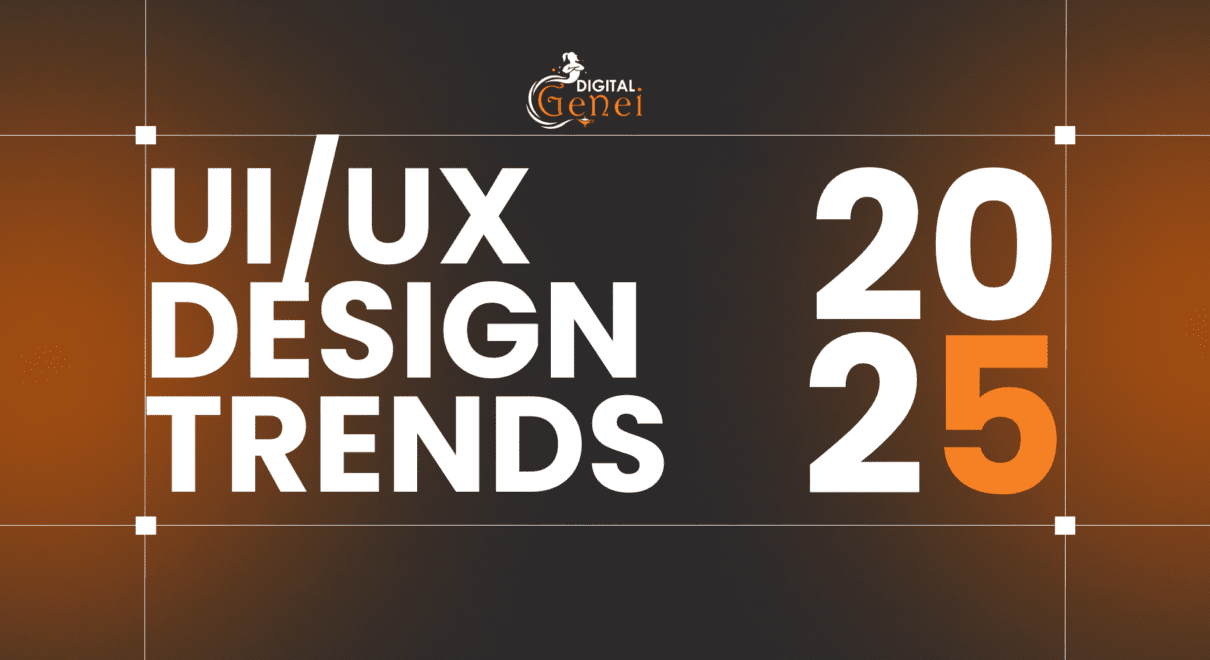The world of UI/UX design is constantly evolving, and staying ahead of trends is crucial for designers and businesses alike. As we step into 2025, several design elements are making their way into the spotlight, while others are gradually fading out. Let’s explore what’s in and what’s out in UI/UX design for 2025.
What’s In?
1. AI-Powered Personalization
Artificial intelligence is playing a significant role in UI/UX, offering hyper-personalized user experiences. AI-driven recommendations, adaptive interfaces, and predictive user interactions are shaping how users engage with digital products.
2. Morphism: A New Dimension in Design
Moving beyond minimalism, morphism has emerged as one of the cooler trends redefining the digital landscape. This broad category includes several sub-trends like Glass Morphism, Skeuomorphism, and Clay Morphism, each bringing a unique aesthetic to the table.
- Glass Morphism mimics the frosted-glass look, featuring semi-transparent backgrounds and vibrant, floating elements. This style creates a sense of depth and is popular in modern, tech-forward applications.
- Skeuomorphism brings real-world textures into digital interfaces, recreating lifelike buttons, knobs, or textures to make digital designs feel familiar and tangible.
- Claymorphism is all about playful, 3D elements with soft shadows, muted colors, and rounded edges, often used in creative industries to evoke a lighthearted, approachable feel.
3. Bento Grid
Bento grids create clean, organized layouts that are responsive and flexible, ensuring designs look great on any device. They balance structure and aesthetics, making interfaces functional and visually appealing.
It’s perfect for showcasing diverse content while maintaining clarity and hierarchy. This approach makes designs feel modern, engaging, and user-friendly.
4. Immersive 3D Elements
3D design elements are making websites and apps more interactive and engaging. Immersive 3D design, with its realistic textures, lifelike shapes, and fluid movements, adds depth that captivates users and transforms static interfaces into memorable experiences. Beyond aesthetics, it enhances functionality with interactive elements like 360° product views, virtual try-ons, and dynamic environments.
5. Dark Mode Enhancements
Dark mode is here to stay, but in 2025, expect it to be more adaptive. Smart dark mode will adjust based on user preferences, ambient lighting, and even time of day for improved usability.
6. AR & VR Integration
Augmented reality (AR) and virtual reality (VR) are becoming more prevalent in UI/UX. E-commerce, education, and gaming industries are leveraging these technologies for immersive experiences.
What’s Out?
1. Overcomplicated Navigation
Users prefer intuitive and minimalistic navigation. Overloading menus and complex site structures are being replaced by simplified, user-friendly designs.
2. Flat Design Without Depth
While flat design is still relevant, overly simplistic UI without depth is losing popularity. The trend is shifting towards layered and visually engaging interfaces.
3. Generic Stock Imagery
Brands are moving away from overused stock images and embracing authentic visuals, custom illustrations, and user-generated content to enhance credibility.
4. Cluttered & Text-Heavy Interfaces
Users prefer visually clean and scannable content. Heavy text blocks and cluttered layouts are being replaced by concise, well-structured designs.
5. Fixed-Width Layouts
With a diverse range of devices and screen sizes, rigid fixed-width layouts are outdated. Fluid, grid-based, and adaptive designs are the new standard.
6. Excessive Skeuomorphism
While elements of skeuomorphism are making a comeback, excessive realism in UI (e.g., leather-textured buttons) feels outdated and unnecessary.
7. Flashy Animations & Over-the-Top Effects
While animations are valuable, excessive or unnecessary motion effects that slow down performance are being replaced with subtle, purposeful animations.
Conclusion
The UI/UX landscape in 2025 is all about personalization, accessibility, and seamless interactions. While emerging technologies like AI, AR, and VR are driving innovation, simplicity and usability remain at the core of great design. By focusing on what’s in and eliminating outdated practices, businesses can create user experiences that are not only visually appealing but also highly functional and inclusive.
Are you ready to implement these trends into your next UI/UX project? Let’s innovate together.




